In 2018, Stephane Naze explained the work of Framestore on Deadpool 2. He then worked on Artemis Fowl and on the series His Dark Materials.
Kyle Dunlevy has been working in visual effects since the late 90s. He joined the Framestore teams in 2015 and has worked on films such as Ghost in the Shell, Paddington 2, Fantastic Beasts: The Crimes of Grindelwald and Army of the Dead.
How did you and Framestore get involved on this show?
We got approached by the client quite early on in the process, almost 2 years ago. They were in a concept stage. FS was quite excited by the project but the schedule for post didn’t fit with our capacity at that time. One year later, the studio needed a vendor for the movie and Framestore embarked on the adventure 🙂
How was the collaboration with director Chris McKay and Overall VFX Supervisor James E. Price?
The Tomorrow War was not my first collaboration with Jamie and I think it helped a lot. Initially the plan was 1 sequence, 78 shots, FS only shots with creatures, big destruction and big environment work, and all this in 3 months only! We had a call with Director Chris McKay and it has been very collaborative; he came with a very detailed and clear brief on what he was expecting.
What were their expectations and approach about the visual effects?
FS got involved in the sequence of Chris Pratt and his team crossing a district of Miami just before the bombing by the jets. We got plates shot in Atlanta, nothing on stage, a lot of dressing like debris, destroyed cars in camera but the design of the buildings was not really what you get in Miami. Therefore, most of the buildings have been replaced, also because of the destruction. But the main challenge for the environment team was not necessarily the change of design to be more Miami looking but the layout of the streets! Atlanta is quite bumpy but Miami is super flat… We had to replace much more of what we were expecting. Also Chris McKay quite likes all the small back stories you can plug in shots, the idea of seeing new details as you watch the movie was something important, to bring a logic behind all the details too (why something is on fire, the choreography of the white spikes with a lot of secondary actions to suggest something planned, windshield exploding due to a fight out of framing) Empty areas was not really an option…
We did internal concepts for all the big establishing shots, all the different key shots. The idea was to lock the visuals before starting the work in CG, the lack of time has pushed us to suggest things that make sense in the time we had to do the work. We knew before starting that the level of expectation would be huge.

How did you organize the work with your VFX Producer?
The Tomorrow War was not my first collaboration with Jeanne-Elise. Seven years ago when I first started at Framestore, I did my first project with her. Jeanne is great, she is on top of things. Our collaboration has been a key point in managing this project. There was no time for mistakes and 3 months was a short amount of time and we needed to be on the same page.
How did you split the work amongst the Framestore offices?
The work has been handled from Montreal. The three big establishing shots of Miami, the aerial shots, have been done by the LDN team, everything else is in Montreal.
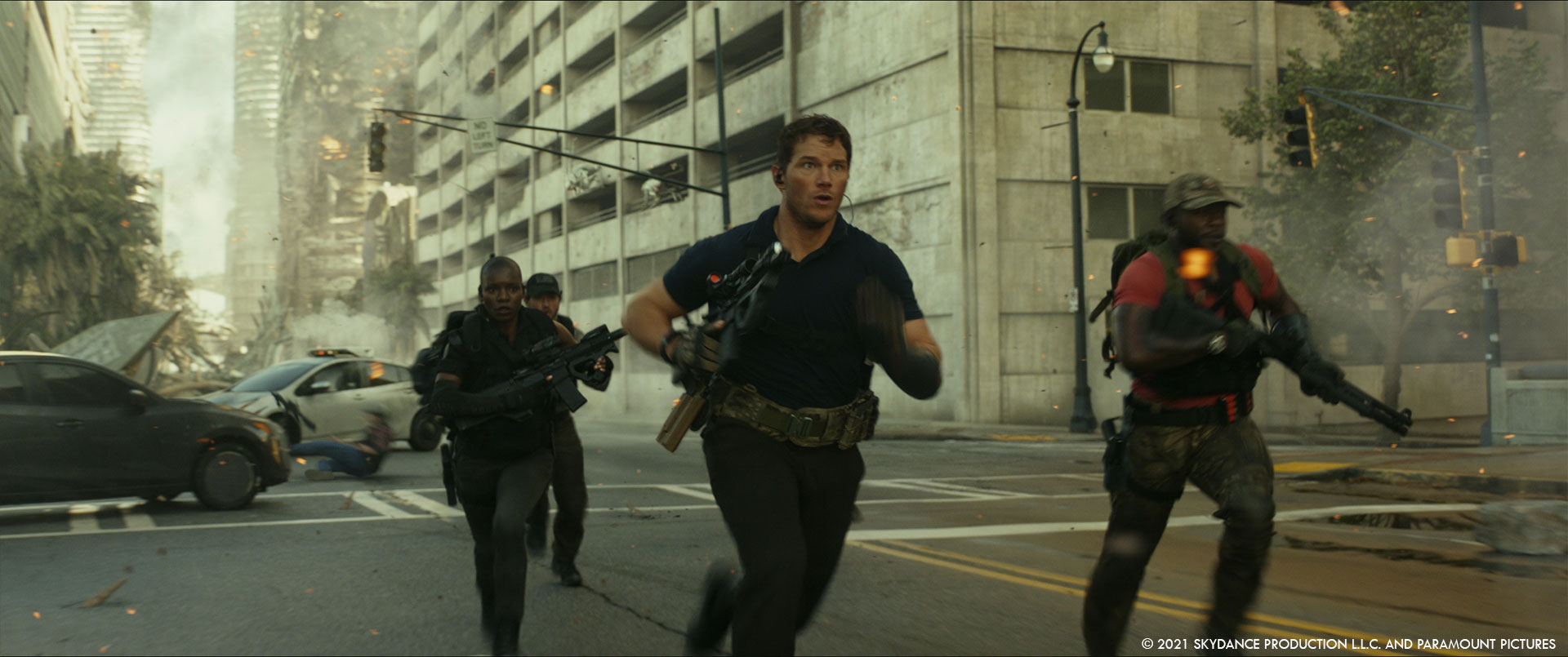
What are the sequences made by Framestore?
Initially FS was involved in the Miami sequence that sees Chris Pratt and his team going through the Miami streets before the bombing. For this scope of work we got 3 months. After, we got a new package with a bit less than 3 months, an establishing shot for the opening sequence of the stadium in Qatar for the World Cup. Also we got a new bunch of shots, 16 jet shots, for the bombing in Miami.

Can you explain in detail about their creation of the aliens?
Kyle Dunlevy // The “White Spike” was an asset developed by Weta Digital. There is the male and also the female but only the first one has been shared and plugged in our shots.
Can you tell us more about the rigging and animation work?
Kyle Dunlevy // We had an awesome rigging team who were able to get the rig into our hands early on. Through lots of collaboration we had a great rig within a few weeks and we were presenting blocks to the client while we refined the more tricky bits like tentacles and special features. We explored fancy dynamic options for the tentacles but in the end, because the tentacle rig was so intuitive we just keyframed everything. When animating, as usual we started by gathering reference. We used clips of various animals doing movements that we wanted to use in the shot. Great reference is the not-so-secret secret to the believability of a well executed creature shot. With this as inspiration we moved on to blocking out the action, focusing on great posing, keeping the heads low, shoulders high, hands and feet planted in a wide stance, with clear and interesting silhouettes. We went for fast, snappy movements, while still respecting the weight of what is actually a pretty huge beast. I’d say one of the particular challenges of the work we did was squeezing the story points into a short amount of time. Our action scene was full of very quick cuts, so we needed to be clean and clear with the White Spike performance. With the director being an animator himself, we found communicating ideas or notes super easy and enjoyable because we were speaking the same language.
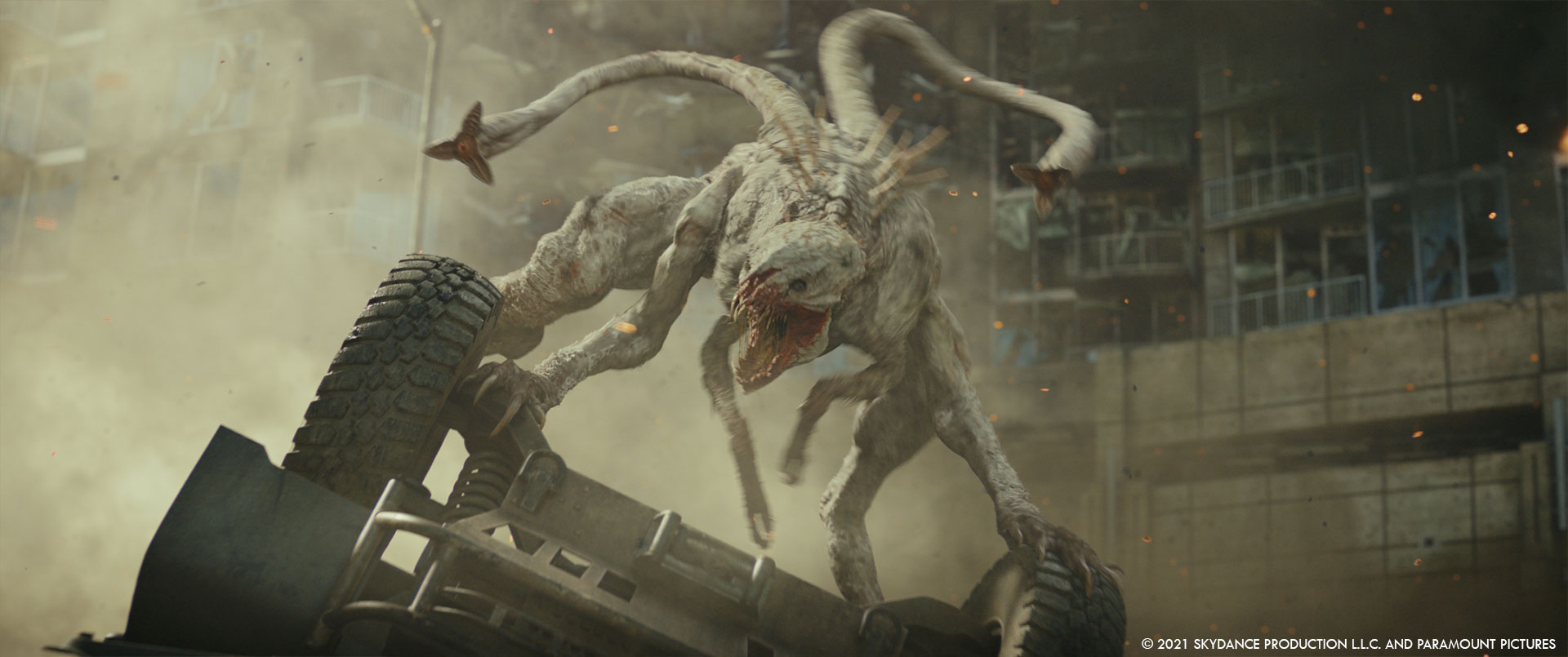
How does their many legs and tentacles affect your work?
Kyle Dunlevy // It definitely added to the challenge! We built a base performance with the main limbs, thinking of them as quadrupeds to start. Then we mixed in the pincers and tentacles, always choosing strong, aggressive posing. In animation it is always important to keep a clear and interesting silhouette so this meant we had to be extra careful, but it also gave us opportunities to explore unique and dynamic shapes.
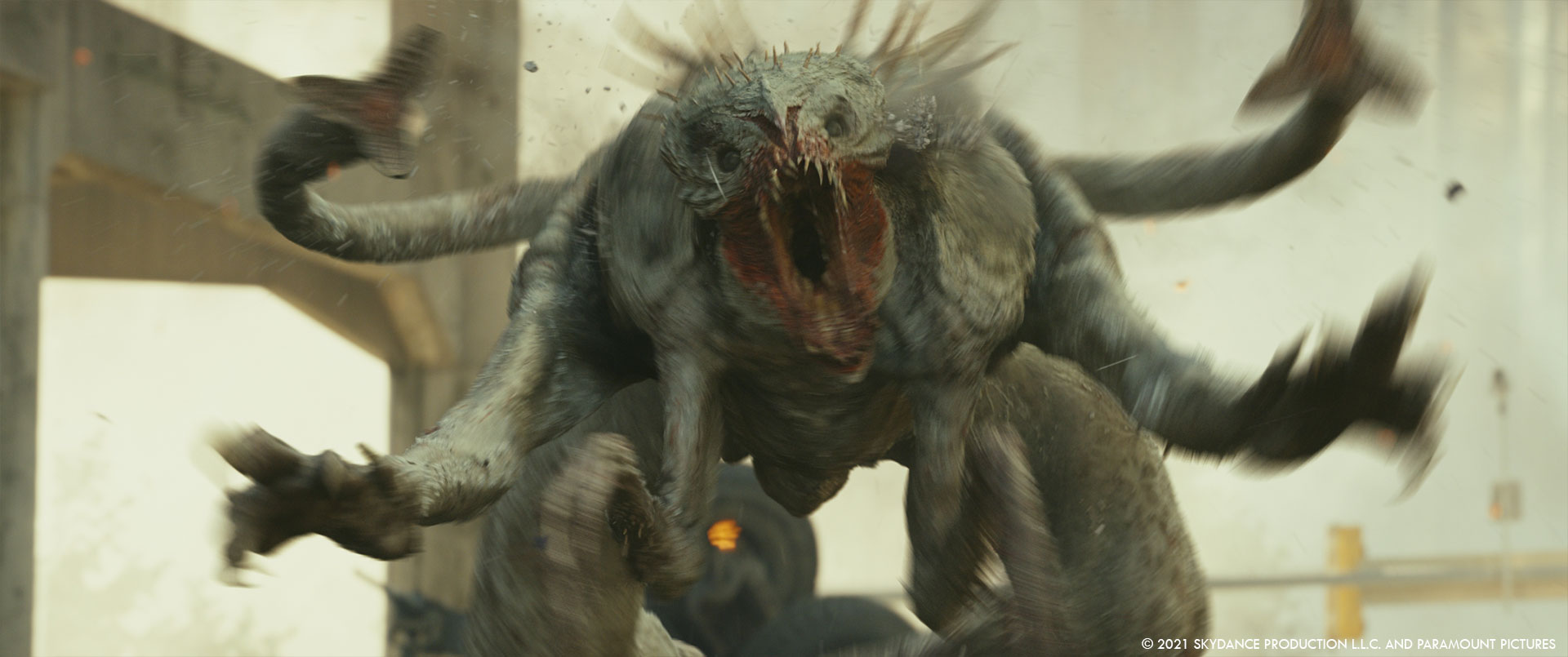
Did you receive specific indications and references for the animation?
Kyle Dunlevy // Yes we were supplied with great material that Weta had created when first bringing this new creature to life with Jamie and Chris. Animation tests, vignettes and cycles were shown to us and we wanted our White Spikes to fit seamlessly into the film so we used all this as a template and guideline for the work we did. Plus, Chris and Jamie, described what they wanted to see, how these characters move and behave. Even with that, our animation team had to ‘find’ the character on their own, something they were able to do quickly. We hit the ground running and had a genuinely fun and enjoyable experience animating these very cool, scary monsters.
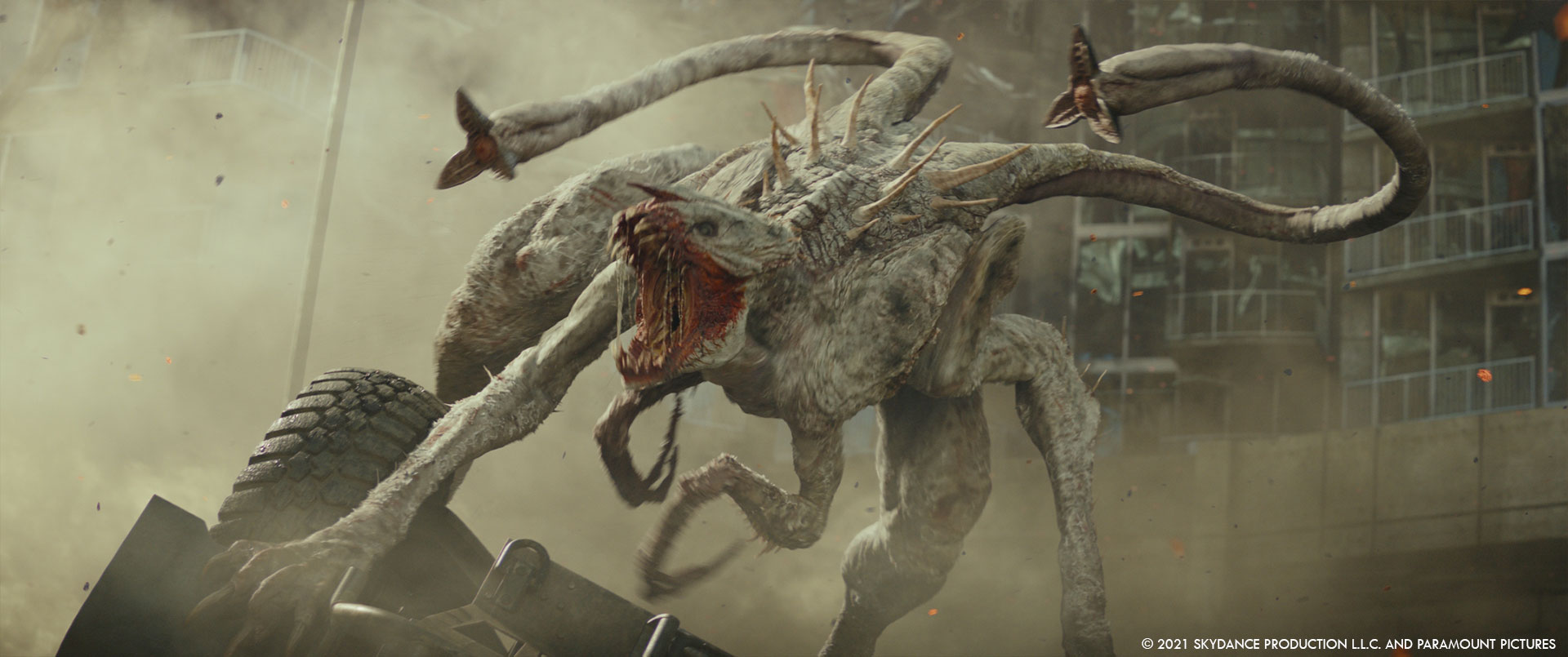
How did you manage the crowd work for the aliens?
None of our shots have a crowd, everything has been animated by hand.
You see a maximum of 12 aliens per shot for our shots.
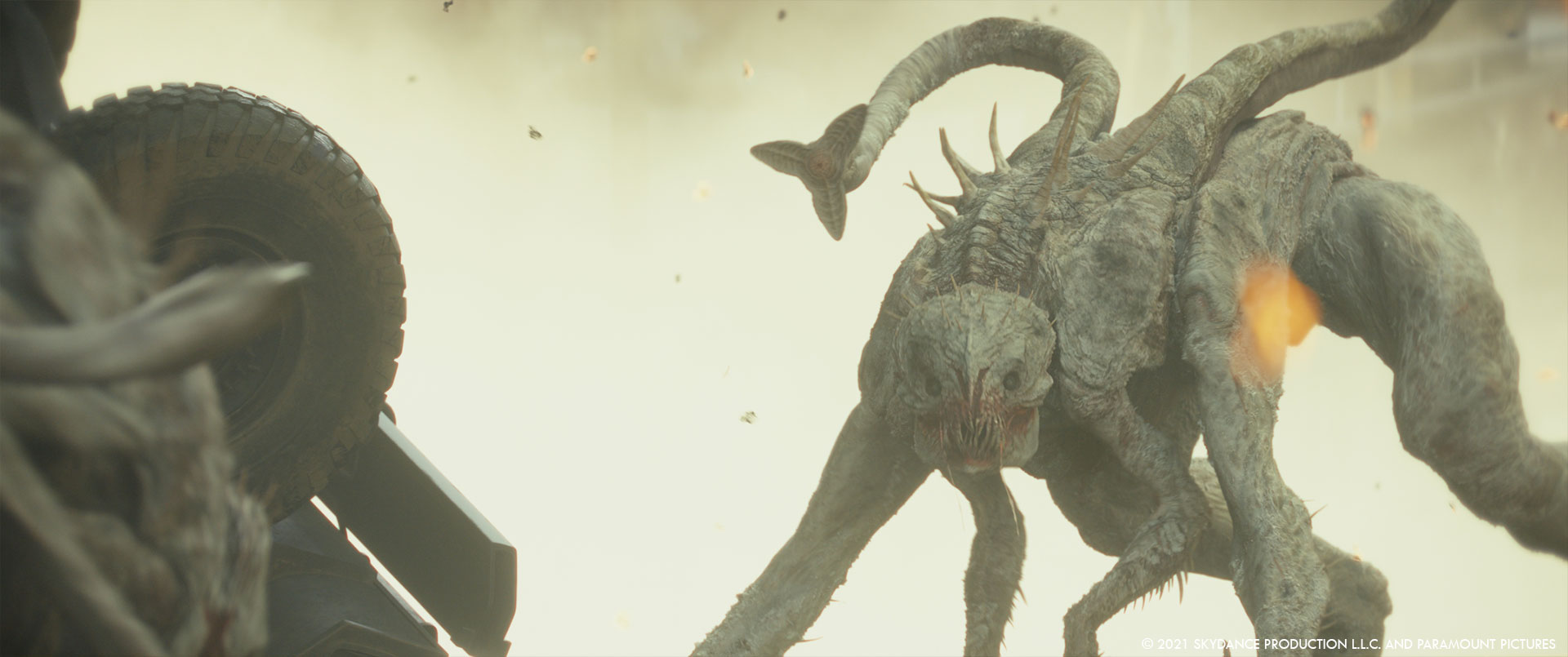
Can you explain in detail about the creation of the devastated Miami?
We first did a layout pass matching the Atlanta streets with clean basic buildings. The next exercise was to define where the transition will be plate vs CG, with of course a bit of flexibility knowing that the possibility to get much more in CG could be an option. From this layout we did some concepts to define the level of destruction and of course to get an approval from the client. In parallel, the environment team was working on a bank of destroyed buildings to populate the midground and the background. FS created procedural tools to be able to create destruction showing the different layers and all the details of a destroyed building.
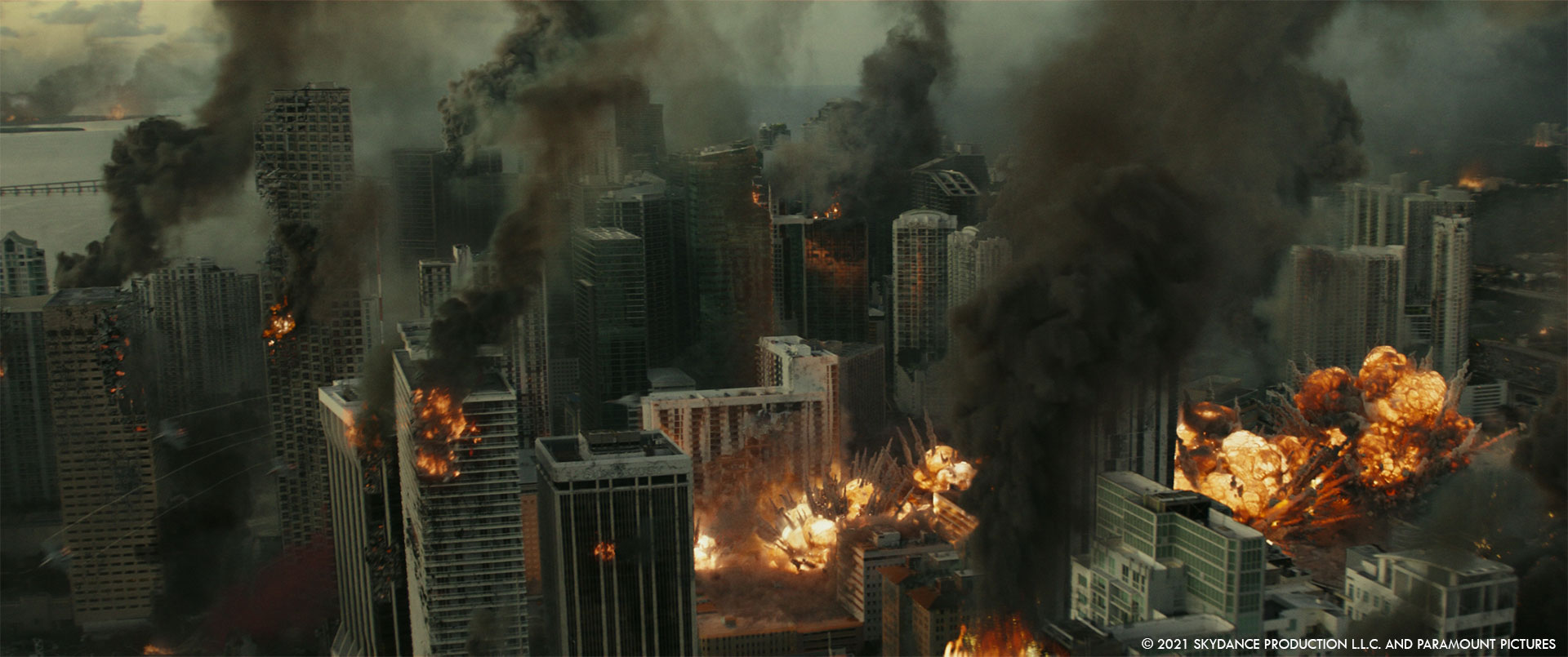
Did you use procedural tools to create the city?
What you get in camera is quite contained; a procedural tool was not necessary for this specific case, at least for the layout of the district seen in our sequence.
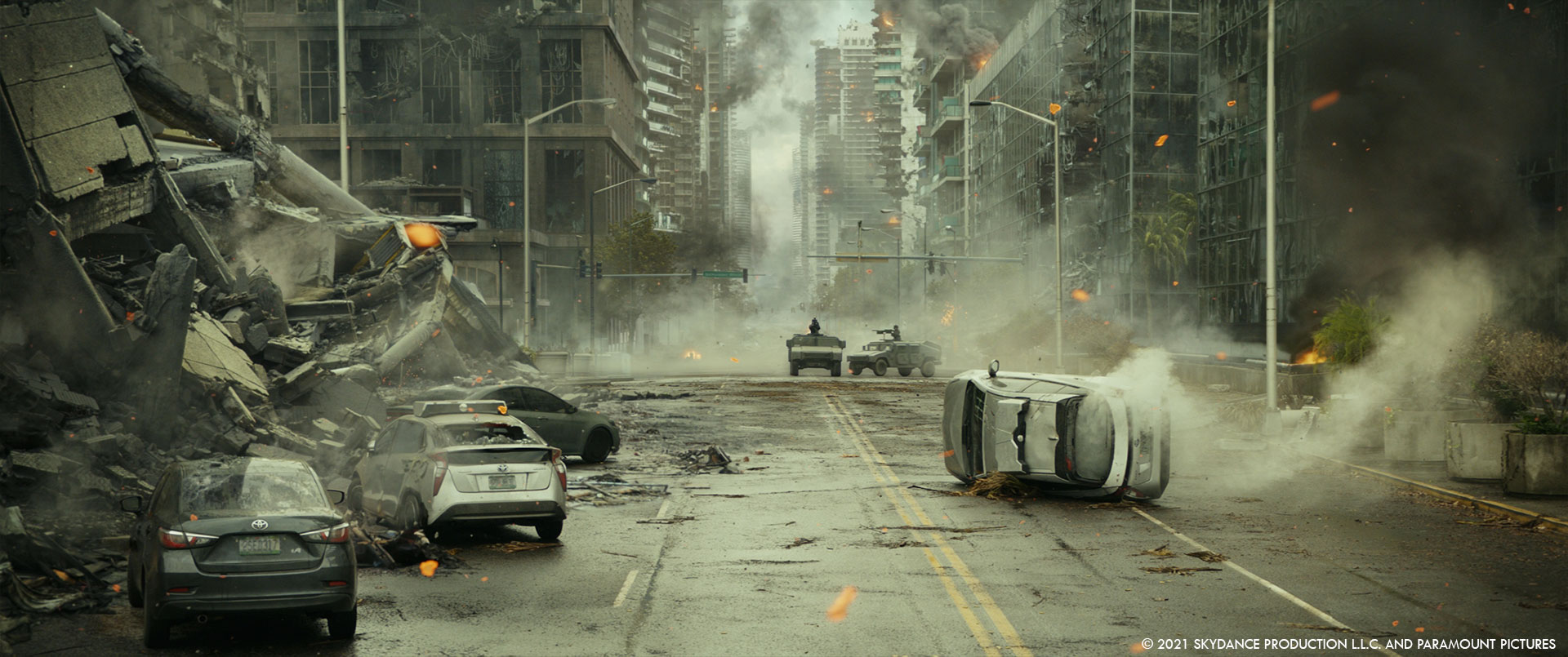
Miami is in ruins. How did you create the various FX elements such as fire and smoke?
Based on client refs (live plates, internet links, shots from the other vendors..), we created a bank of fire, flames, and smoke to populate the Miami streets, the buildings, and cars on fire. Another “small” but very important feature was the different layers of ashes and ambers to populate the shots. All the shots in Miami have this element and we had to match the other vendors (mostly Luma Pictures). This element was crucial because it helped for the general atmosphere and for this idea of chaos.
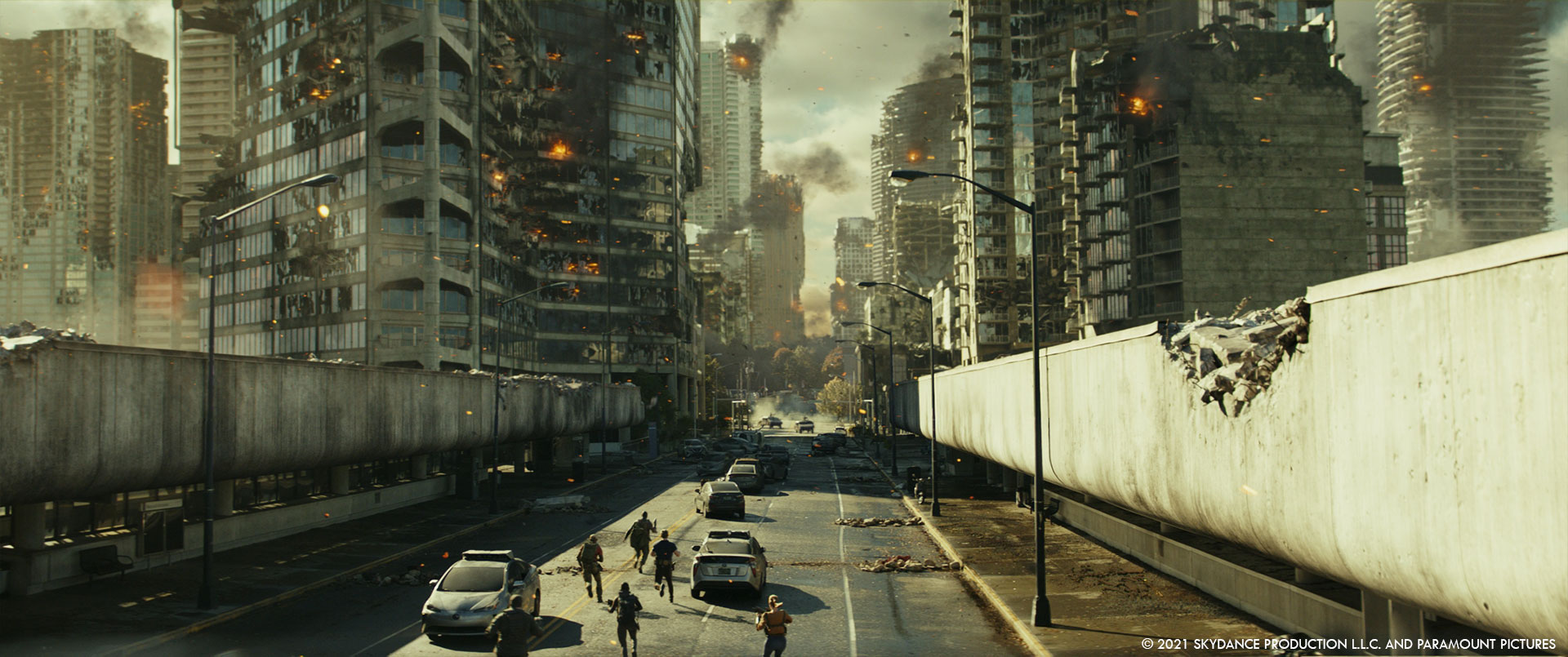
Can you elaborate about the fighter jets creation and the shots seen from their cockpit?
We have 2 different scenarios there. Shots with the camera out of the cockpit at ground level and shots inside of the cockpit using a go-pro. For the first case we had to paint out all the reflections on the canopy and we had to build CG ones, then we added the sky and the top of buildings on fire with smoke and fire. The big challenge was to get a realistic sense of motion and not to get the feeling of having a fake movement in the BG. For the second case, the work was different, we had to keep partially the BG and to add Miami on fire with destructions and to add reflections on the helmet. Also because the camera was different (go pro) we had much more work in comp to make it work and not to have the audience being disconnected from the action.
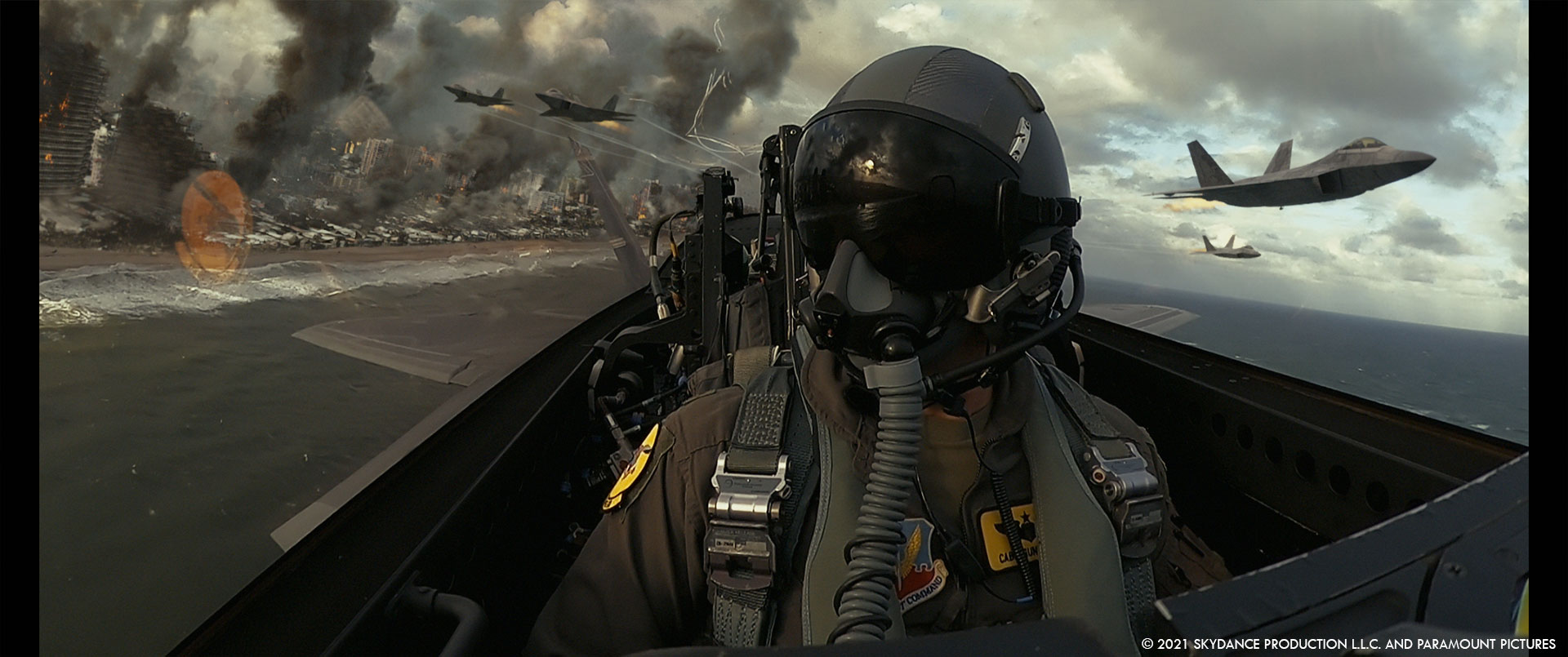
Which shot or sequence was the most challenging?
The complexity between our shots was pretty equal but I would say the shot at the street level when the bombs are dropped, everything explodes, the White Spikes, buildings, heavy FX simulation…
Is there something specific that gives you some really short nights?
From the beginning to the end everything has been tight. Due to their massive pipeline, big companies are not always super good to do quickly very complex shots but FS has shown his capacity to manage it.
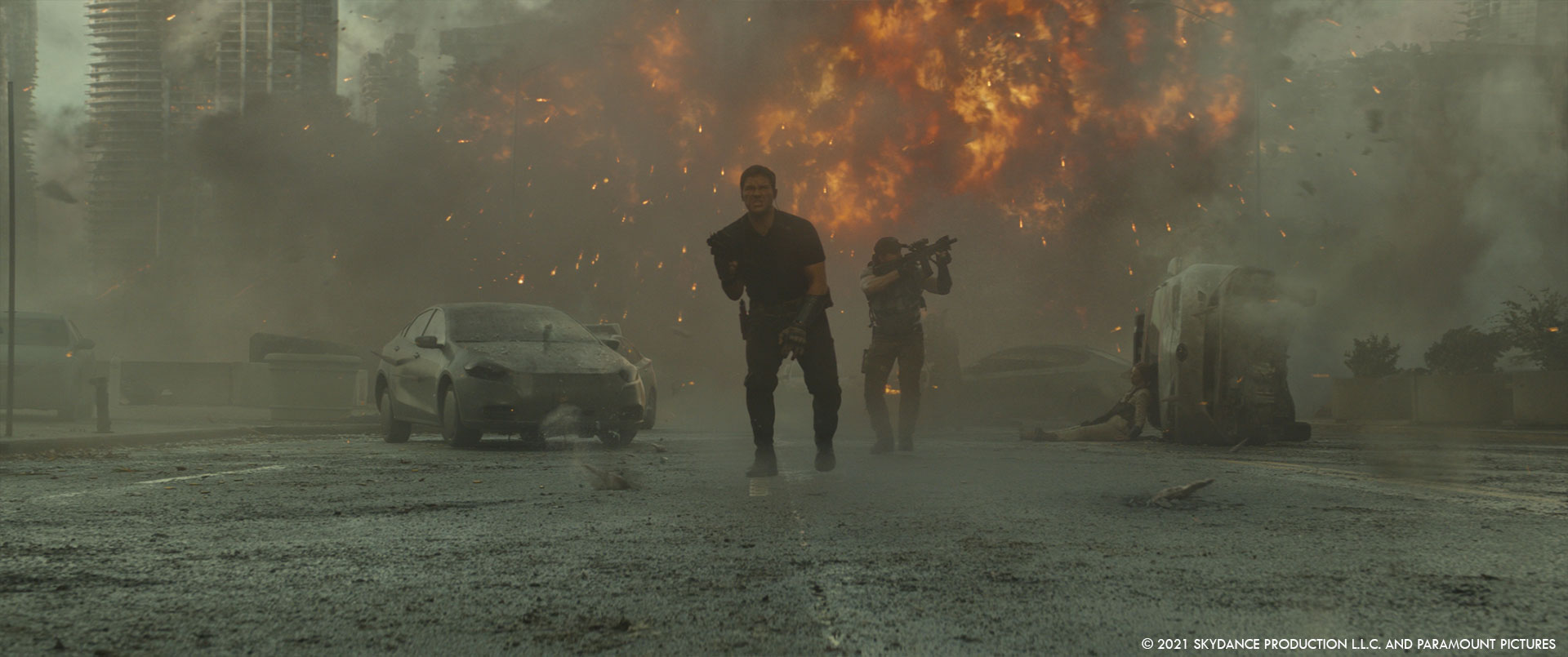
What is your favorite shot or sequence?
I quite like the close up of the White Spike, the “alpha”, on the top of the Humvee. Not the most complex shot but it is quite graphic. The pose, even on a still frame, is very good.
What is your best memory on this show?
1 month and half after having started on the show we sent the first animation beat with the aliens and the client said “it is exactly what we want”. That day, we realized, even if it is gonna be hard, we will do this…!
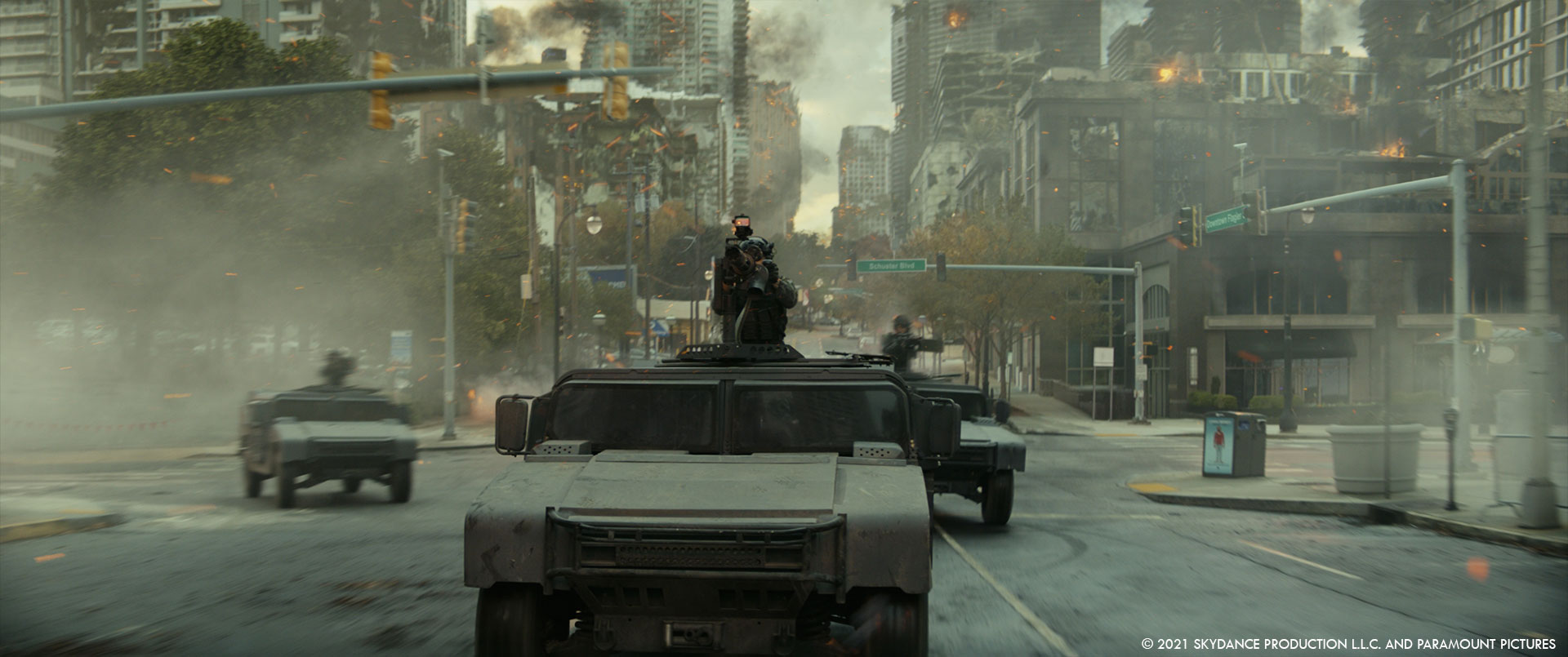
How long have you worked on this show?
6 months in total (initially 3).
What’s the VFX shots count?
95 shots.
What was the size of your team?
80 artists.
What is your next project?
Stephane Naze // Fantastic Beasts 3
Kyle Dunlevy // Back to HOD’ing!
A big thanks for your time.
WANT TO KNOW MORE?
Framestore: Dedicated page about The Tomorrow War on Framestore website.
Amazon Prime: You can now watch The Tomorrow War on Amazon Prime Video.
© Vincent Frei – The Art of VFX – 2021




